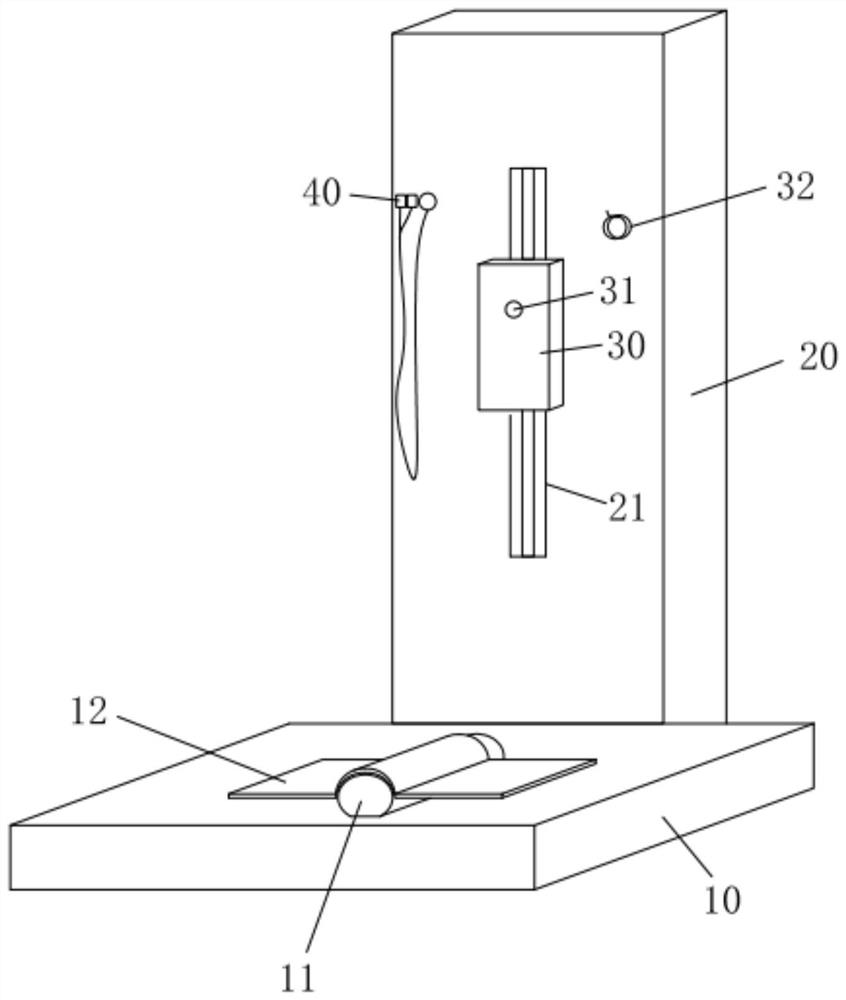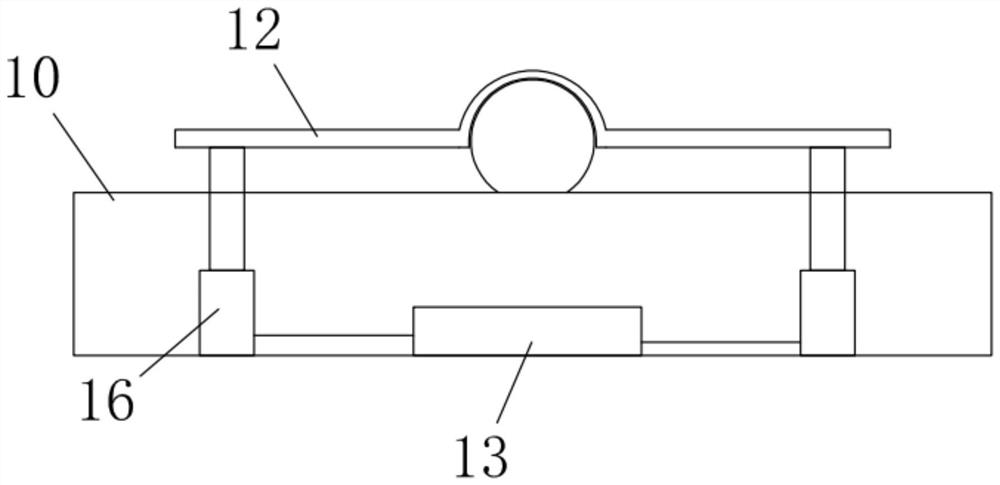A multi-dimensional device and test method for testing the autonomous balance ability of human body
A balanced ability and multi-dimensional technology, applied in diagnostic recording/measurement, medical science, diagnosis, etc., can solve the problems of large test limitations, inability to obtain, and large impact, and achieve the effect of avoiding accidental falls and reducing the difficulty of testing
- Summary
- Abstract
- Description
- Claims
- Application Information
AI Technical Summary
Problems solved by technology
Method used
Image
Examples
Embodiment 1
[0049] like Figure 1-Figure 6 As shown in the figure, this embodiment proposes a multi-dimensional testing device for the autonomous balance ability of the human body, including a test table 10, a supporting column 11, a pedal 12, a stand 20, a vertical guide rail 21, a slider 30, a visual recognition camera 31, The target bracelet 32 and the brain wave patch 40, wherein, the support column 11 is horizontally installed on the top surface of the test table 10, the part of the support column 11 exposed to the test table 10 is cylindrical, the main body of the pedal 12 is a flat plate, and the middle part of the pedal 12 An arc-shaped accommodating groove 121 protrudes upward, the pedal 12 is overlapped on the arc surface of the support column 11 through the accommodating groove 121, and the pedal 12 forms a tester stepping position on the left and right sides of the accommodating groove 121, The inner ring surface of the accommodating groove 121 matches the curvature of the o...
Embodiment 2
[0057] like Figure 7-Figure 10 As shown, the present embodiment proposes a multi-dimensional test method for testing the autonomous balance ability of the human body, using the device for testing the autonomous balance ability of the human body in multiple dimensions in Embodiment 1, including the following steps:
[0058] Step 1. Prepare for the test: guide the tester to step on the pedals on the left and right sides of the pedal 12, wear the target bracelet 32 on the tester's hands and wrists, and attach the brain wave patch 40 to the tester's forehead, and put it on the computer. Enter the age information of the tester in 50, and the computer 50 controls the electromagnet 111 to generate a magnetic force according to the age information of the tester and the corresponding preset value to adjust the friction force between the support column 11 and the pedal 12, adjust the slider 30 and the visual Identify the height of the camera 31, so that the visual recognition camera ...
Embodiment 2
[0064] The device and the method will be described in detail below with reference to Embodiment 1 and Embodiment 2.
[0065] Before the test, first enter the tester's age. The tester's age is preset to three groups, namely the youth group (15-30 years old), the middle-aged group (31-60) and the elderly group (over 61 years old), three groups The corresponding age data factors λ are, respectively, the age data factor λ of the youth group is 1, the age data factor λ of the middle-aged group is 1.1, and the age data factor λ of the elderly group is 1.4. The introduction of the above-mentioned age data factor λ is due to the fact that with the increase of age, the balance ability of the tester decreases. During the test process, such as when the elderly are tested, the state of balance often occurs, resulting in too much invalid time and too much corresponding generation. invalid test data set.
[0066] For example, if the tester's input age is 65 years old, the tester's age fall...
PUM
 Login to View More
Login to View More Abstract
Description
Claims
Application Information
 Login to View More
Login to View More - R&D
- Intellectual Property
- Life Sciences
- Materials
- Tech Scout
- Unparalleled Data Quality
- Higher Quality Content
- 60% Fewer Hallucinations
Browse by: Latest US Patents, China's latest patents, Technical Efficacy Thesaurus, Application Domain, Technology Topic, Popular Technical Reports.
© 2025 PatSnap. All rights reserved.Legal|Privacy policy|Modern Slavery Act Transparency Statement|Sitemap|About US| Contact US: help@patsnap.com



